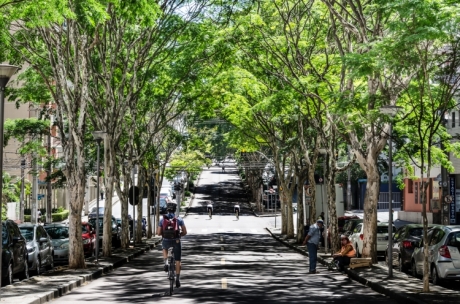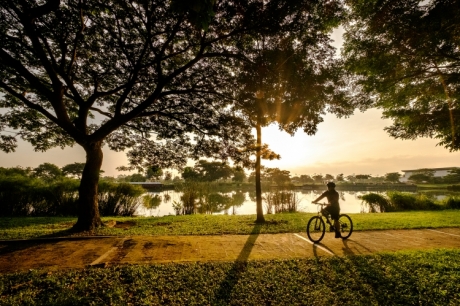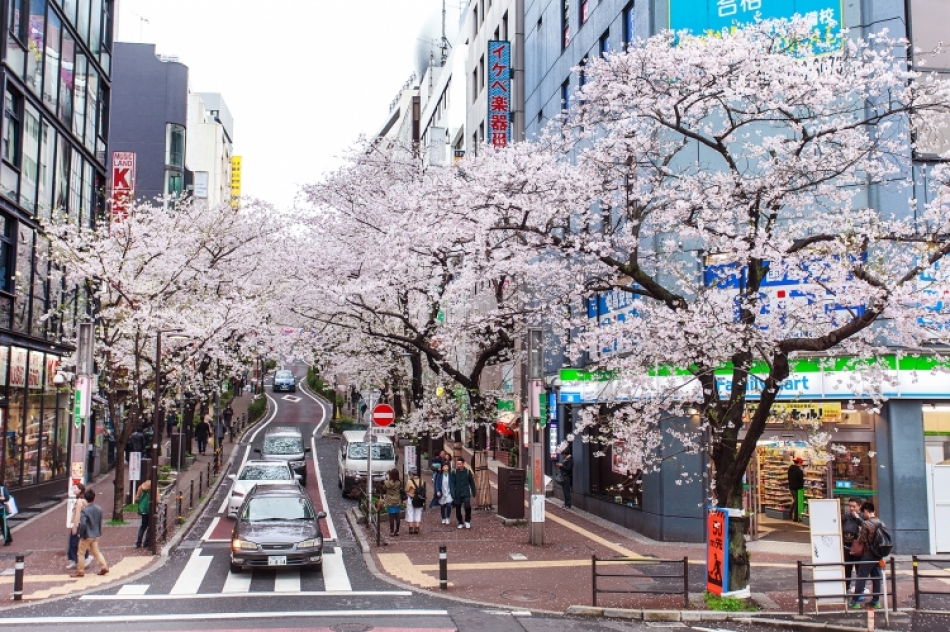
Green spaces don’t exist just to beautify urban areas. Trees are the lungs, liver and beating heart of the world’s cities, and they are fundamental to creating healthy, liveable and sustainable cities around the globe.
Trees are an important way to mitigate climate change and improve air quality, making cities healthier places to live in. They’re also critical for places with warm climates. In fact, strategic placement of trees in cities can help to cool the air between two and eight degrees Celsius, making that sticky urban heat just a little more bearable. Large trees are also excellent at absorbing pollutant gases and filtering fine particulates such as dust, dirt or smoke out of the air by trapping them on leaves and bark.
And they’re not just good for the environment – they have positive effects on us humans too. Research shows that living close and having access to green spaces can improve physical and mental health by decreasing high blood pressure and stress, for example.
For all these reasons, it is vital that modern urban planning takes trees seriously. That’s why FAO and the Arbor Day Foundation started the Tree Cities of the World programme, a collaborative effort to encourage cities and towns around the globe to invest in, properly maintain and sustainably manage urban forests and trees. 2019 was the first year of eligibility for this worldwide initiative and 68 cities from 17 countries were recognised for their commitment to urban forestry. The programme has since almost doubled and now includes 120 cities from 23 countries.
Here are some of innovative, inspiring initiatives put in place by four Tree Cities:
Birmingham, United Kingdom
Over the last couple of decades, Birmingham has moved from an industrial city to a green beacon of modern urbanity. It became a Tree City in 2019.
The local government’s “Route to Zero” plan aims to make the city a net zero carbon emitter by 2030. It has focused on creating green corridors and green infrastructure within Birmingham. An example of this is Cole Valley, a park, cycle route and natural space alongside the river, encouraging walking and cycling as part of residents’ commutes.
Alongside this, the “Route to Zero” plan included a project that mapped the city’s tree cover, essential for lowering its summer temperatures. It was found that whilst some areas had canopy cover of 40 percent, some had as little as 10 percent. The council is now focusing on planting trees and creating green spaces across all city districts to get as much of the city as possible up to at least 25 percent canopy coverage, which is the minimum needed to realise heat-reduction benefits.


Tree canopy coverage keeps city temperatures down, and green corridors and bike paths encourage sustainable transport. Left/top: ©FAO/Fabio Lopoes Right/bottom: ©FAO/Klienne Eco
Campo Grande, Brazil
Campo Grande, a city in west central Brazil, became a Tree City in 2019.
Over the last years, the city’s Urban Forestry Programme has been planting trees to protect watercourses and improve canopy cover over pavements and pedestrian areas.
The programme is using afforestation to reduce the city’s atmospheric, noise and visual pollution to promote a better quality of life for its inhabitants and help maintain local biodiversity. In fact, Campo Grande is renowned for its diverse wildlife, even being granted the title of National Capital of Birdwatching Tourism. It is a gateway to the Pantanal, a seasonally flooded grassland dotted with woodlands, home to a vast array of birds, including the jabiru stork and hyacinth macaw, and mammals, such as the giant otter and jaguar.
Kampala, Uganda
Kampala became a Tree City in 2021 due to its commitment to planting trees, boosting green spaces and creating a more sustainable urban environment.
The Kampala City Council now has a designated ‘Landscape Section’, dedicated to managing urban tree planning through a team of landscape architects, quantity surveyors and environmentalists. In the last few years, two new parks have opened, the Chwa II Children’s Park and Nakawa Park in the business district of the city. Overall, 8 000 trees have been planted through the Kampala Goes Green campaign, encouraging residents to donate or plant a tree across the city.
The city also held a Running Out of Trees 330-kilometre relay race to raise awareness for tree planting and guard against illegal tree cutting. The route started in Kampala and ended in Gulu city, with trees planted at every relay handover point.

Trees aren’t just beautiful, they have positive effects on humans too. Having access to green spaces can improve physical and mental health! ©FAO/Klienne Eco
Hyderabad, India
Hyderabad was crowned a Tree City in 2020 thanks to the local government’s effort to improve green cover across Telengana state. Since 2015, the state has planted 2.2 billion saplings and is on its way to meeting its target of 2.3 billion saplings by the end of 2021. A total of 109 urban forest parks are being developed, of which 53 have already been completed.
The local government also runs programmes designed to make the villages and towns around Hyderabad clean and green too, providing households with saplings to plant and manage.
FAO and the Arbor Day Foundation are connecting cities around the world in a network dedicated to reinforcing the most successful approaches to managing urban trees and forests. Why not let your local council know about the Tree City programme?
Learn more

Sem comentários:
Enviar um comentário